New Delhi: The China-Pakistan Economic Corridor (CPEC) is one of the most important elements of President Xi Jinping’s trillion-dollar Belt and Road Initiative. It is also a big sticking point in India’s relationship with China.
Just last week, foreign minister Wang Yi appealed to India to shed its opposition to the corridor, saying it in no way “undermined” the basic position on Kashmir. The appeal came ahead of the Belt and Road Forum Beijing is hosting from 25 to 27 April, in which 37 heads of state and government have confirmed their participation, including Pakistani Prime Minister Imran Khan.
However, not all is well with the CPEC.
Khan’s government in Pakistan seems to believe that the corridor will bring little benefit to the country unless proper agreements are signed with China. The Pakistani army’s generals seem to echo the sentiment, going by the remarks of its Southern Army Commander Lt.Gen. Aamer Riaz.
#Pakistan #GOC #SouthernComd& #12Corps #LtGenAamerRiaz on #CPEC.Will only repair&feed unless proper agreements made.I'm Paki 1st.Very candid pic.twitter.com/Vk2AdSEs5F
— 卫纳夜格@Raj (@rajfortyseven) April 22, 2017
As reported by ThePrint in November 2017, work on the CPEC was progressing at a fast pace. But China is believed to have stopped funding CPEC projects over charges of corruption, and by mid-2018, Pakistan’s National Highway Authority was in a financial crisis since Chinese cheques worth $3.5 billion were not cleared. Recently, a controversy erupted due to the alleged siphoning of 2,400 crore Pakistani rupees ($171.6 million) from the CPEC to other non-BRI projects.
ThePrint takes a look at the slowdown in the progress of the CPEC in the Khyber Pakhtunkhwa province through satellite imagery.
Sluggish pace
The pace of CPEC-related projects seems very sluggish as compared to 2016-17, especially near towns and cities.
The progress is not concurrent at many locations, while at some place, it has virtually come to a standstill. The mountainous terrain seems to be compounding the problems of cutting and grading work.
In 2016-17, 121 km of cutting and grading work was completed, while in 2018, just 53 km was possible.
Road alignment
The alignment of CPEC roads has been away from existing roads, especially in Khyber Pakhtunkhwa. This assists in the construction work as it does not hamper the continuous flow of traffic.
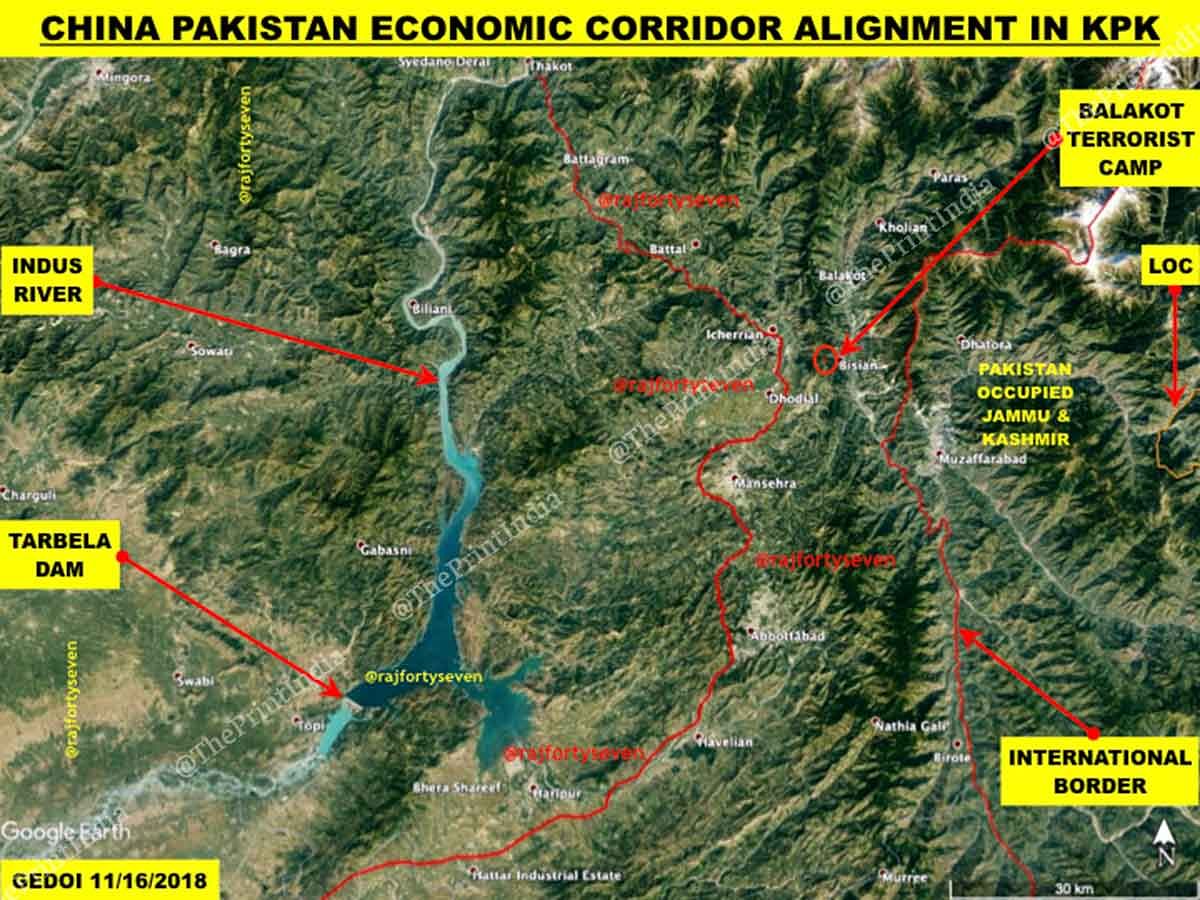
However, surprisingly, the alignment of the old Karakoram Highway (KKH) and the new CPEC road from Battagram to Thakot is almost the same, until where the last alignment can be observed on satellite imagery. This has created many difficulties in traffic management — traffic jams can be observed from space, as can a water-drenched road near the exit of the Chinjal tunnel.
The alignment of the CPEC has reached very close to the Indus river near Thakot, but hasn’t yet crossed the river. No construction material or mountain cutting is noticed beyond Thakot.
Storage areas
A large number of ‘storage areas’ have been earmarked along the CPEC road for storing raw material and accommodating the staff and workers of the project. These are mainly subdivided into three blocks — storage areas, construction area and living area.
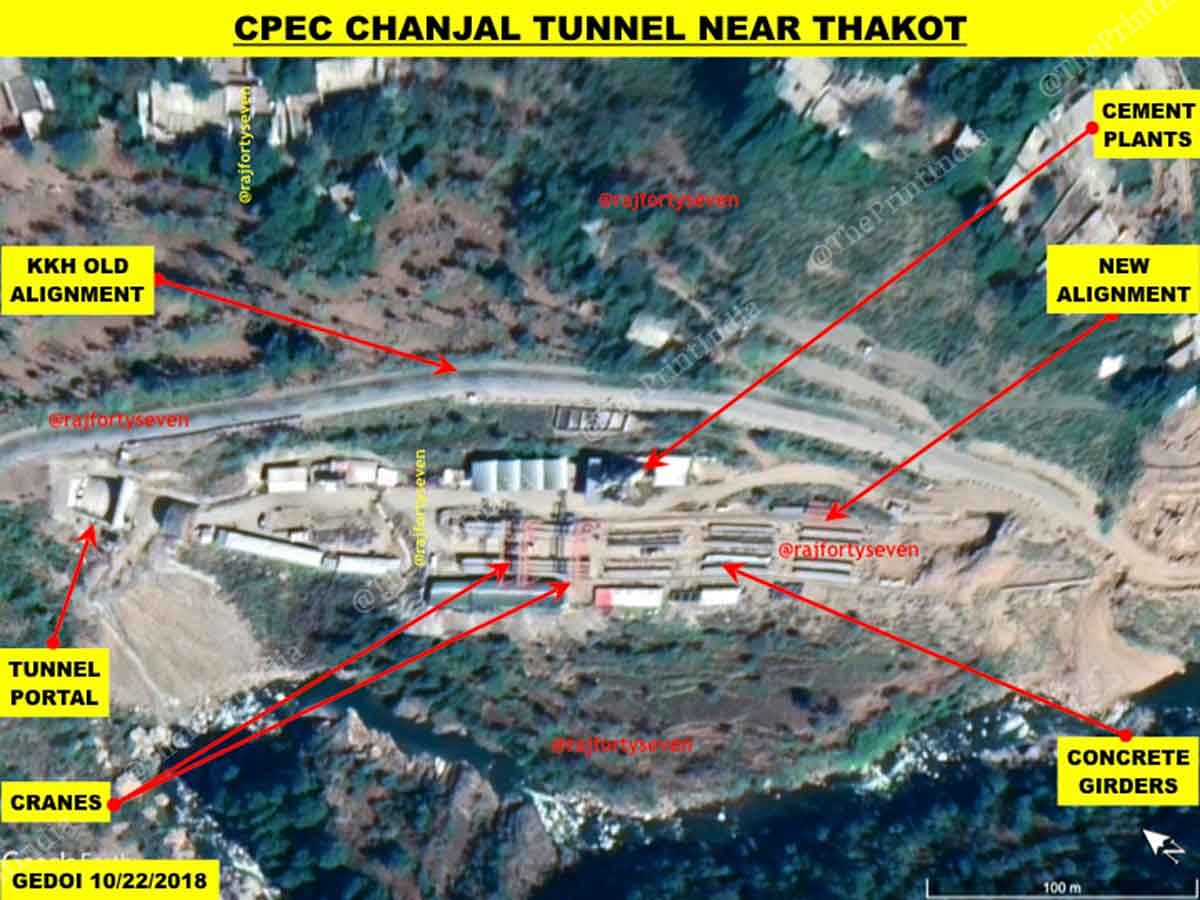
The storage areas generally have cement mixer plants, with some barracks for stocking of raw material and for motor transport.
Construction areas are always observed with concrete girder blocks being prepared and stored nearby after the drying process is over. Two or three cranes are seen at these places for lifting these concrete girders.
The living areas typically consist of barracks, generally gable-roofed with blue corrugated galvanised iron (CGI) sheets.
Two tunnels
Two tunnels are observed in the newly-constructed 53 km stretch of CPEC road in Khyber Pakhtunkhwa.
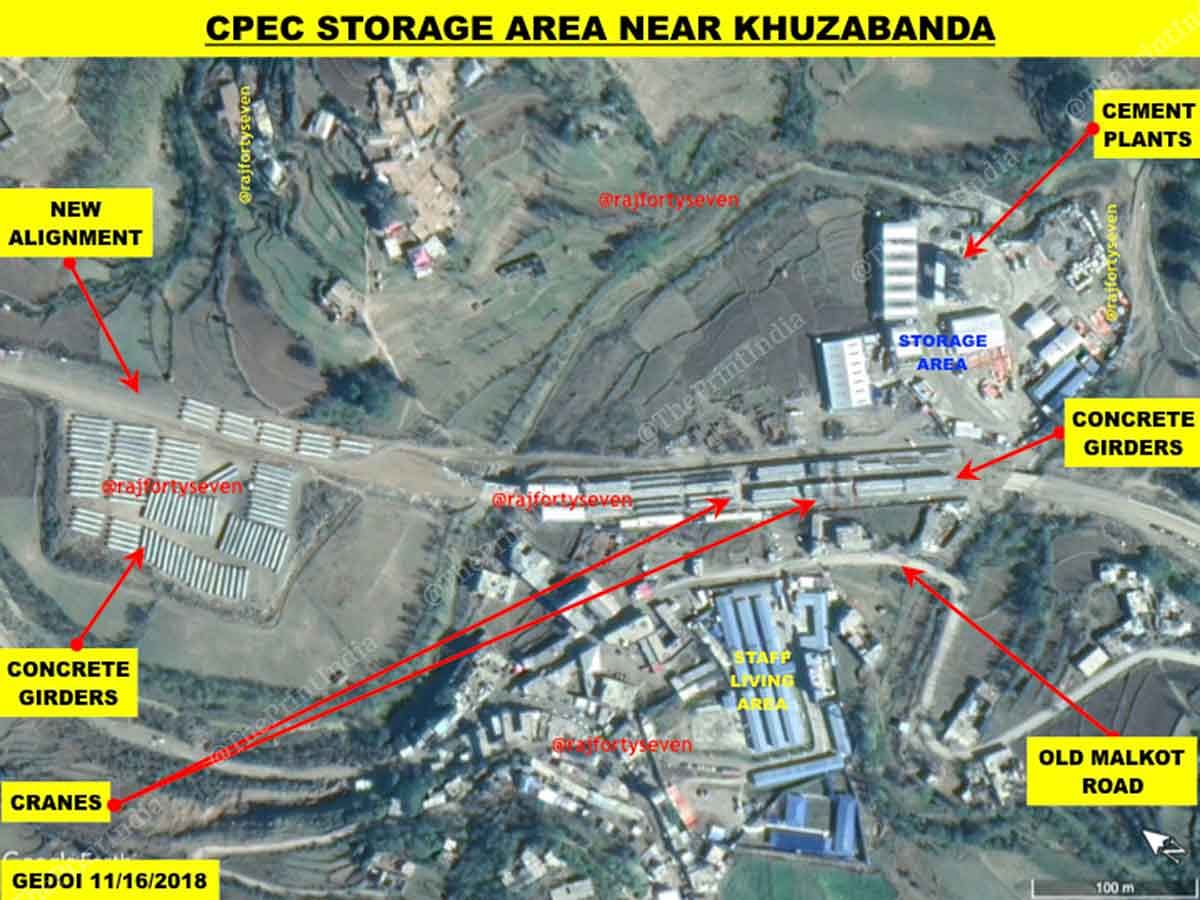
The first one crosses Qiam Gali, with a length of 2,600 m. It has obviously damaged the environment and destroyed large tracts of the Khabbal Reserved Forest.
The second is seen at Chanjal village, about 1 km, cutting across the mountain.
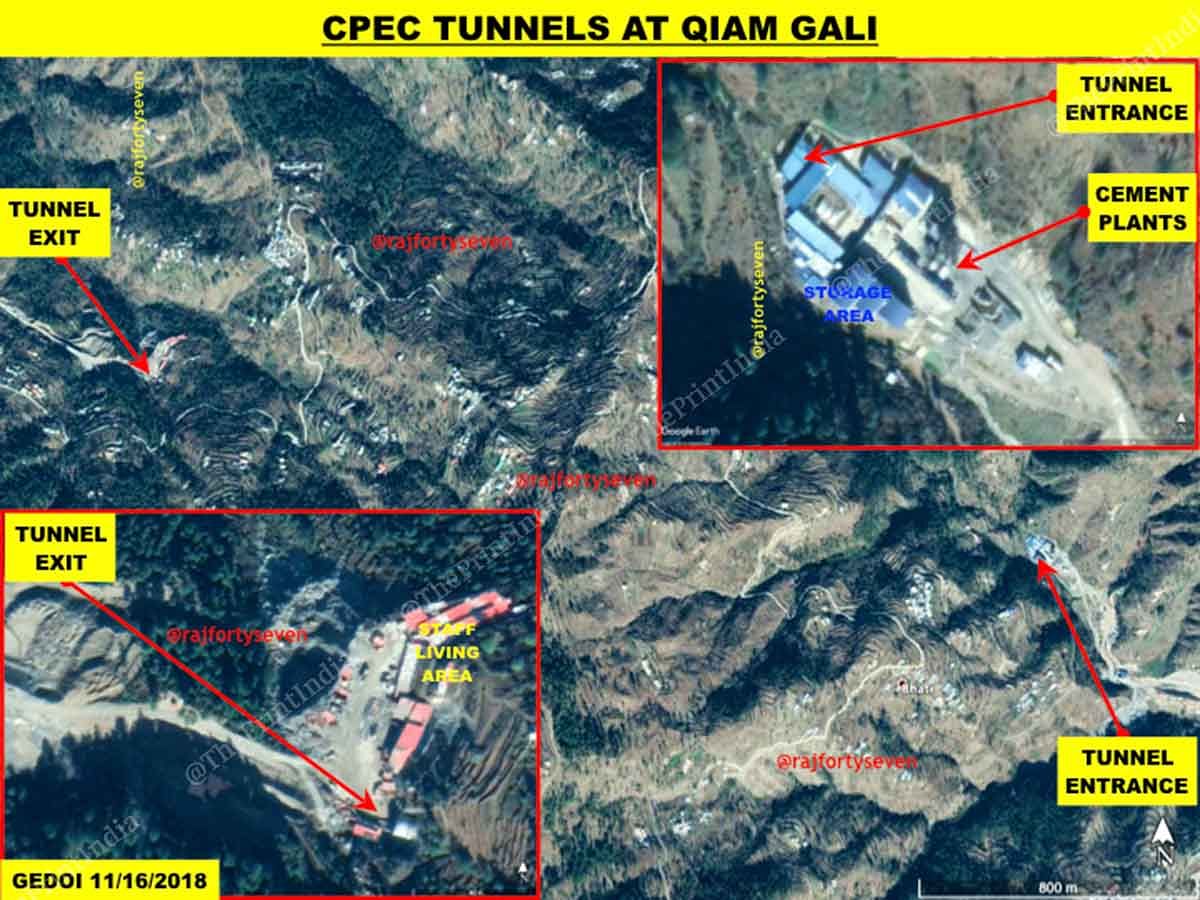
Both are single tunnels with a width of 10 m each. However, both locations are likely to see twin tunnels sooner rather than later.
Toll booths
There are a few interchanges observed in the lower heights of Khyber Pakhtunkhwa, connecting important towns and roads with the CPEC.
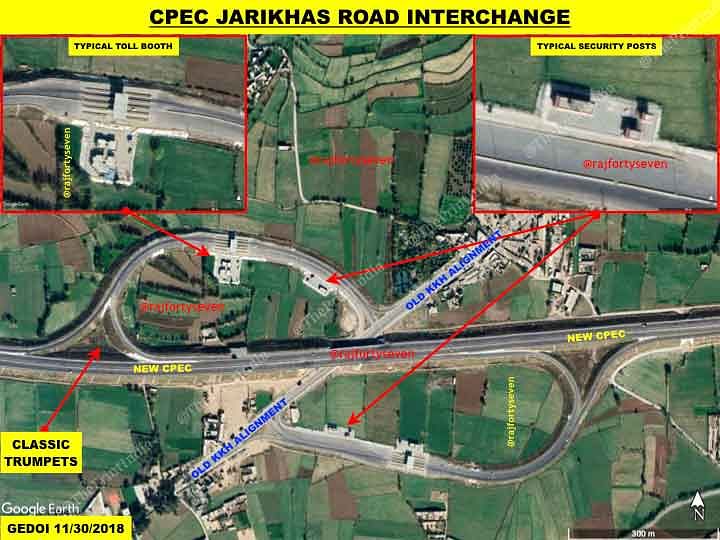
The interchanges are all manned with toll booths on incoming and outgoing traffic connections. These toll booths typically have four lanes for smooth flow of traffic.
Security posts have been created beyond the toll booths, with provisions for staff to live in.


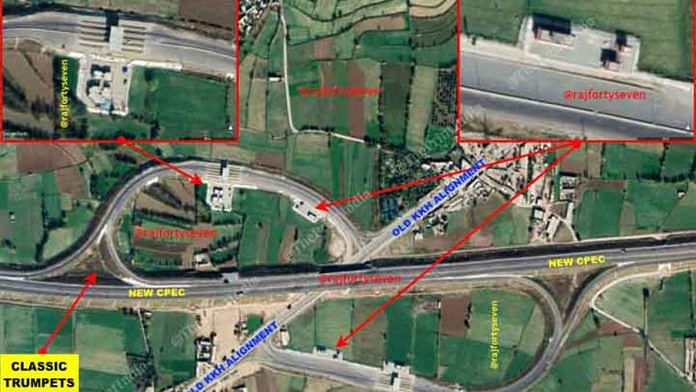

State Khybari (Corruption) as opposed to irregular Khybari (i.e. Islamic”Toll” on movement of people and goods)